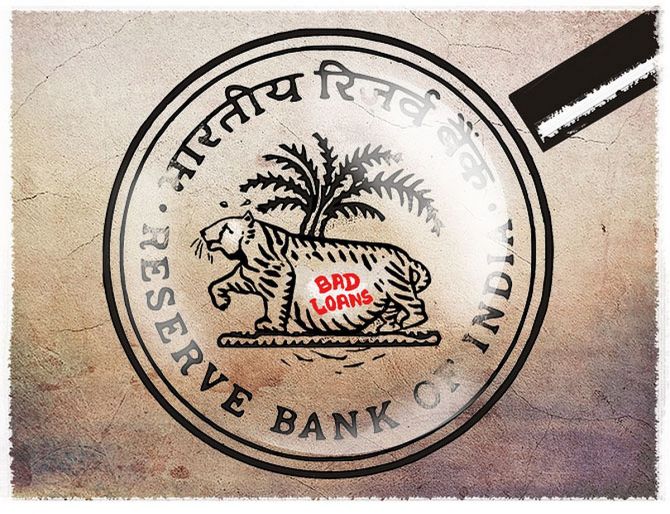The major beneficiaries of loan recasting will be sub-Rs 500 crore corporate exposures and retail exposures, which were earlier expected to see the highest increase in NPAs in percentage terms.

Over Rs 3 lakh crore of debt to retail and small corporate segment is at risk because of the coronavirus pandemic and will benefit from the loan restructuring scheme announced last week by the RBI, according to a report.
The central bank's move will help contain the quantum of sour loans and if not for the recast, the banking system's non-performing assets (NPAs) would have touched a 20-year high of 11.5 per cent, domestic rating agency Crisil said in the report on Monday.
Last week, the RBI announced the loan recast package for individuals and entities hit by the pandemic.
It formed a committee under former ICICI Bank chief K V Kamath to come out with detailed rules, and hinted at a case-by-case approach under the contours laid down in the June 2019 circular on stressed assets to deal with it.
The major beneficiaries will be sub-Rs 500 crore corporate exposures and retail exposures, which were earlier expected to see the highest increase in NPAs in percentage terms, Crisil said.
It estimated the debt at risk - loans at risk of slipping into NPAs this fiscal unless restructured by banks - at a "sizeable" Rs 3 lakh crore.
The agency said large corporate loans are not at such a high risk, as they were in the last NPA cycle after the global financial crisis, because of the de-leveraging efforts of the past few years.
"Last time, the NPAs came primarily from bigger and chunkier accounts, whereas this time, an analysis of the top-100 exposures of our large, rated banks reveals that...these entities are likely to be better-positioned to withstand the current challenges," its senior director Krishnan Sitaraman said.
A study of 14,000 companies having exposures of over Rs 25 crore, which constitute three-fourths of lending classified as corporate loans by banks, showed that debt at risk in corporate loan accounts with exposure less than Rs 500 crore is Rs 2 lakh crore, the agency said.
It added that the ratio of the debt at risk for the sub-Rs 500 crore exposures segment is five times that of larger corporate loans.
The retail segment, which was considered a safe haven for banks in the recent years, is witnessing significant pressure because of the stress being faced by salaried and self-employed borrowers, it said estimating the total debt at risk in this at Rs 1 lakh crore.
The unsecured loans will be the most at risk, while home loans will be the least because of the psychological attachment of Indians to the homes they live in, and the priority they accord to repaying home loans, it said.
Asset quality in the micro, small and medium enterprise (MSME) segment, which is among the most vulnerable, is already benefiting from the restructuring scheme and measures such as the Rs 3-lakh crore Emergency Credit Line Guarantee Scheme, it said.
The agency's director Subha Sai Narayanan said implementation of the RBI announcement is key along with individual bank's policies on extending these relaxations to customers.
"For corporate loans, given the requirements of participation by lenders having 75 per cent of exposure by value and 60 per cent by number, and independent credit assessment by a credit rating agency... we are likely to see banks being selective in extending restructuring," he added.
Banks will follow different paths on the retail front, which will have the well-capitalised ones choosing to recognise more of the stressed loans as NPAs rather than restructuring them, he said.
Factors such as prescribed eligibility criteria, additional provisioning requirements, and capping of restructuring tenures are expected to play a role in limiting the extent of restructured assets, the agency said.










